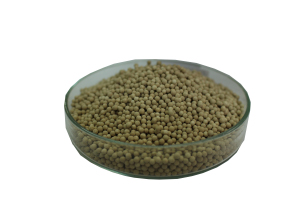Molecular Sieve
Molecular sieves are highly versatile adsorptive materials commonly used as desiccants in removing moisture from gases and liquids. The desiccants made from porous zeolites can selectively adsorb molecules based on their unique structure.
Efficient Solvent Drying
Molecular sieves can remove moisture, gases, and other impurities from liquids and gases, making them suitable for gas purification, drying liquids, and separating mixtures. Industries such as petrochemicals, electronics, and food processing use molecular sieve desiccants to eliminate moisture from natural gas, hydrogen, and air.
The moisture absorbers can be used in solvent-drying processes within the pharmaceutical, fine chemicals, and polymer sectors, efficiently removing water from solvents. Molecular sieve desiccants also be used in refrigerant drying, where they effectively remove water from refrigerants in air conditioning and refrigeration systems.
Automotive emissions control systems can benefit from molecular sieve materials acting as adsorbents, effectively capturing pollutants like volatile organic compounds (VOCs) and nitrogen oxides (NOx). Molecular sieves also serve as catalysts in various chemical reactions, including converting methanol to olefins.
Gas Purification and Moisture Removal
While molecular sieves can be regenerated for reuse like other desiccants, their high thermal stability requires regeneration temperatures ranging from 400°C (752°F) to 600°C (1112°F) to eliminate adsorbed water and impurities.
This temperature range exceeds that needed for silica gel or activated alumina. The regeneration process varies depending on the specific molecular sieve material and intended application. Generally, it involves heating the desiccant material in a stream of hot gas, such as nitrogen or air, for a predetermined duration.
Quality Assurance and Compliance
For optimal storage conditions, it is recommended to store molecular sieves in metal cans at room temperature, ideally between 15°C (60°F) and 27°C (80°F). Additionally, humidity levels should be maintained between 0%RH and 70%RH.
We offer a wide range of different customisation options of different sizes and specifications to ensure a tailored packaging solution. We maintain high standards with daily quality checks in our in-house QA laboratory that complies with 9001 and 14000 ISO standards to ensure the molecular sieves desiccant meets expectations and provides optimal moisture protection.
- Porous structure with interconnected channels and cavities
- High adsorption capacity
- Selective adsorption based on size, shape, and polarity
- Regenerable and reusable
- Rapid adsorption kinetics
- Effective moisture control
- Gas separation capabilities
- Catalyst support for enhanced activity and selectivity
- Shape selectivity in certain molecular sieves
- Temperature and chemical stability
- Mesh size: 8-12, 4-8, or 3-5
- Bulk density: 0.65-0.75 g/cm3
- Pore volume: 0.28-0.30 cm3/g
- Adsorption capacity: >20% by weight
- Water content: <1% by weight
- Size: typically in the form of small beads or pellets
- Chemical composition: typically composed of alumina and silica tetrahedra
- Regeneration temperature: typically 200-350°C for desorption of adsorbed molecules
- Type 3A: Used for drying and purifying gases and liquids with a polar nature, such as ethanol, methanol, and natural gas
- Type 4A: Effective in removing water and carbon dioxide from natural gas, air, and other gases and liquids
- Type 5A: Used for the separation of gases and liquids with a molecular diameter of up to 5 Angstrom, such as nitrogen and oxygen
- Type 13X: Used for the adsorption of larger molecules, such as water, carbon dioxide, and hydrocarbons, in natural gas and petroleum industries
- Type 10X: Ideal for the removal of impurities from the air, such as carbon dioxide, water, and nitrogen
- Type LSX: For separating light gases, such as helium, hydrogen, and carbon monoxide.
Molecular Sieve Product Brochure - Humi Pak Malaysia: Download


